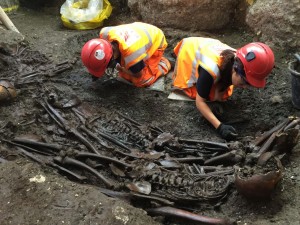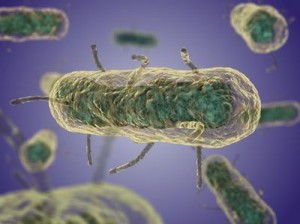The amount of deaths caused by the Great Plague has been the center of many debates throughout the scientific community. Throughout its reign in the in the seventeenth century, the plague took the lives of over fifteen percent of London’s population. The biggest variable that has largely remained unsettled is how the plague was transferred , wither brought from Asia or from rodents. But thanks to the discovery of new skeletons in London, the world might finally get the answer.
The skeletons were discovered by a construction crew that was working on building a new underground railroad in London. The timing couldn’t have been better because they were celebrating the 350th anniversary of the Great Fire of London, which is a large fire that many believe wiped out the plague.
Scientists were able to gather small samples of the pathogen Yersinia Pestis, which is the bacteria linked to the Great Plague. Luckily, enamel acts as a time capsule for anything that is present in a persons’ blood stream at the time of death. This certain pathogen has been linked to the plague, and the samples they were able to get from the skeletons, they can now look into how it was able to spread so quickly throughout the population. And fortunately, the bacteria itself died shortly after the host, so it poses no health risk to the public.
Because the Yersinia Pestis was also linked to Black Plague in the 14th century, scientists have plans on comparing the two strands and seeing how the two stack up against each other. If the DNA sequences match, it could prove that there is a local reserve of the plague through rats. If the DNA sequences do not match, it could prove that there were possibly different strands that were coming in from Asia. Although they suspect currently that it is the rats.
Scientists are beginning to look at the skeletons to find out more about the victims themselves, to further understand the demographics of those that were effected by the plague. Of the victims they have already studied, they have found all to be under the age of twenty five, as well as two being male and one female. They also plan on looking into the diets, pollutants that they had consumed throughout their life time, and wither or not they were locally from London or had traveled from somewhere else.
This just goes to show that in science, you never truly stop learning. What we thought years ago we’d never learn, is now right in front of us.
Sources
https://microbewiki.kenyon.edu/index.php/Yersinia_Pestis_(Pathogenesis)
http://www.historic-uk.com/HistoryUK/HistoryofEngland/The-Great-Plague/



I never knew that there might have been different strands of the Bubonic plague! I was also unaware that the Great Fire of London could be responsible for halting the plague. I think it’s crazy that scientists are able to tell what people ate, pollutants they consumed, and where they are from. I mean these bodies are hundreds of years old and they can get that kind of information, that’s crazy! I just read this article about how gerbils, not rats, probably spread the bubonic plague. You should read more about it if you are looking into the causes and transmission of the plague. http://www.history.com/news/scientists-blame-gerbils-not-rats-for-the-black-death